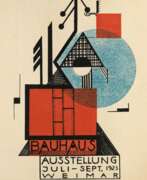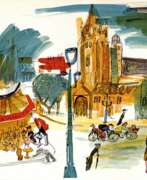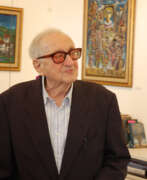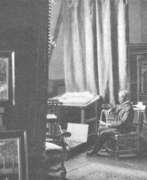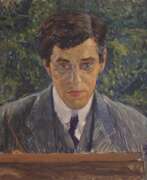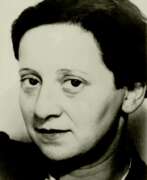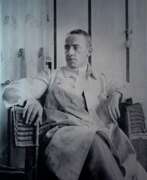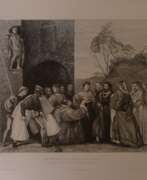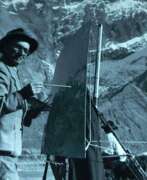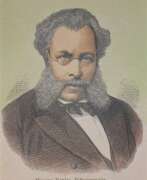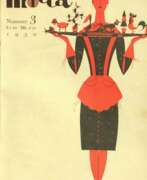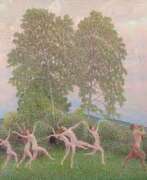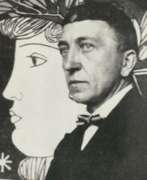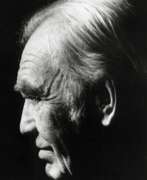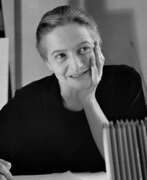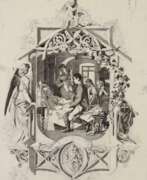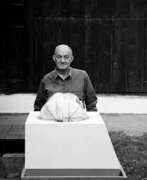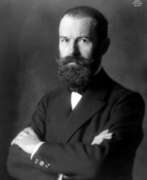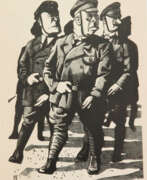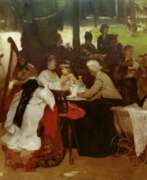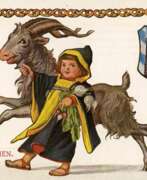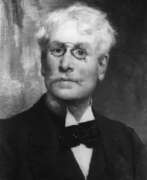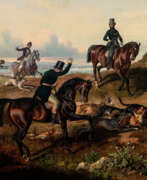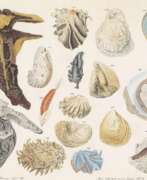Illustrators Austria
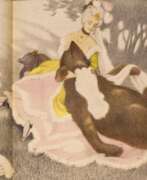

Moritz Bauernfeind was an Austrian painter, graphic artist, illustrator and cartoonist.
Moritz studied at the Academies of Fine Arts in Vienna and Munich, then at the Académie Julian in Paris, early landscapes painted in the style of Impressionism.
Bauernfeind gained fame in the early 20th century as an illustrator of political satire, notably in Meggendorfer's Humorous Notes and Der Flo. Between 1900 and 1905 he published more than 200 satirical drawings in Der Scherer and Simplicissimus, and in 1909 a series in the Illustrirten Zeitung in Leipzig. And color illustrations for fairy tales and legends were eagerly published by juvenile and many other publications. Bauernfeind's fantastic genre images with stylized figures and a touch of burlesque attract with their unusualness and mystery.
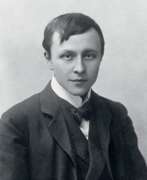

Alfred Kubin was an outstanding Austrian engraver, illustrator and writer, and a prominent representative of the Symbolic and Expressionist trends in the visual arts in the first half of the 20th century. Alfred Kubin's works are full of phantasmagoric and grotesque depictions of dreams, motifs of desolation and fear.
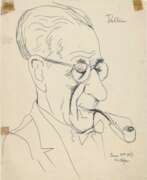

Benedikt Fred Dolbin, born Pollak, an Austrian press illustrator, studied at the Vienna University of Technology and worked for the construction company Waagner, Biro & Kurz during the First World War. He later moved to Berlin, where he worked as a press illustrator and book illustrator. Because of his Jewish origins, he was excluded from the Reich Press Chamber in 1933 and was banned from working in 1935. After emigrating to the USA, Dolbin continued his career His career as a draftsman continued, but he was unable to build on his earlier successes.
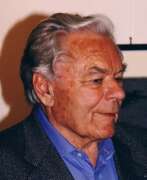

Paul Flora was an Austrian cartoonist, graphic artist, and illustrator known for his skill with pen and ink.
Flora's work has appeared in the famous New York Times and The Observer newspapers, and his drawings have graced the stamps of Liechtenstein and Austria. Paul Flora has been one of Europe's most famous illustrators since the 1960s.
He also produced books, films and sets.
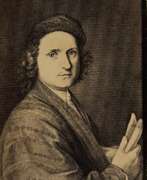

Girolamo Franceschini was an Italian theater artist, draftsman, and lithographer who worked in Austria.
From 1848-1859 Franceschini worked as a costume designer for two court theaters in Vienna, designing original costumes for many plays and operas. Franceschini was also for a time a contributor to the Illustrated Theater Newspaper there and published numerous series of illustrations.
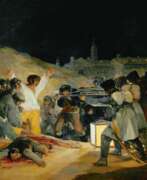

Hans Fronius was an Austrian painter and illustrator. His work is considered an example of "expressive realism," and he painted portraits, street scenes, and literary interpretations. Fronius was one of the first to illustrate stories by Franz Kafka, as well as works by Edgar Allan Poe and Robert Louis Stevenson.


Robert Hammerstiel, an Austrian painter and engraver born on 18 February 1933 in Vršac, Yugoslavia, was renowned for his profound and impactful art. His works, deeply influenced by his experiences, were widely exhibited in prominent cities like New York, Vienna, Cairo, and Brussels.
Hammerstiel's journey in the art world was notable for its depth and variety. In 1988, he transitioned to a full-time artistic career, leaving behind his work in the steel industry. This shift marked a new phase in his life, allowing him to fully dedicate himself to his art. One of his significant works includes "Von Ikonen und Ratten: Eine Banater Kindheit 1939 – 1949," which comprises 32 woodcuts, highlighting his skill in both writing and visual arts. His talent was recognized with several prestigious honors, including the Austrian Decoration for Science and Art in 1998 and the Austrian State Prize for Graphics in 1973.
Hammerstiel's art was not just limited to traditional formats; in 2007, he impressively wrapped the Ringturm in Vienna with a 4,000 square meter painting. His works are a part of various collections and have been displayed in significant exhibitions. Notably, the Leopold Museum in Vienna featured his graphic work in an exhibition titled "Winterreise", inspired by Schubert's song cycle, showcasing a series of drawings and woodcuts.
Robert Hammerstiel's influence in the art world extended beyond his lifetime, culminating in his birth town dedicating a museum to his works in 2010. His passing on 23 November 2020 marked the end of an era but left behind a rich legacy that continues to inspire artists and art lovers globally. His work is a testament to the power of art in expressing the complexities of human experiences and emotions.
For collectors, auctioneers, and experts in art and antiques, the works of Robert Hammerstiel offer a unique blend of cultural richness and profound artistic expression. His art, characterized by its emotional depth and technical skill, continues to hold a special place in the world of fine arts.
To stay informed about exhibitions, sales, and auction events related to Robert Hammerstiel's art, sign up for updates. This subscription will keep you updated on new opportunities to engage with the work of this influential Austrian artist.
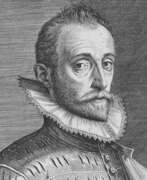

Joris Hoefnagel or Georg Hoefnagel was a Flemish painter, printmaker, miniaturist, draftsman and merchant. He is noted for his illustrations of natural history subjects, topographical views, illuminations and mythological works. He was one of the last manuscript illuminators and made a major contribution to the development of topographical drawing. His manuscript illuminations and ornamental designs played an important role in the emergence of floral still-life painting as an independent genre in northern Europe at the end of the 16th century. The almost scientific naturalism of his botanical and animal drawings served as a model for a later generation of Netherlandish artists. Through these nature studies he also contributed to the development of natural history and he was thus a founder of proto-scientific inquiry. Hoefnagel was a very versatile artist. He is known for his landscapes, emblems, miniatures, grotesques, topographical drawings, genre scenes, and mythological and allegorical drawings and paintings. Part of Hoefnagel's artistic works was kept by Constantijn Huygens his nephew. These works were seen by Dutch artists and exercised an important influence on the development of Dutch still life and naturalist art.
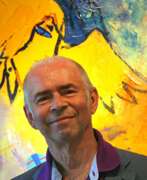

Adi Holzer is an Austrian visual artist, illustrator, draughtsman, painter, graphic artist, glass painter and sculptor of bronze sculptures and glass sculptures. He works alternately in his studios in Værløse in Denmark and Winklern in Austria. In Austria he is a member of the Carinthian Art Association.
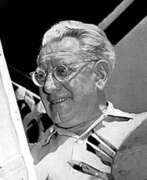

Ernst Huber, an Austrian painter, was a significant figure in Austrian Classical Modernism. Born in Vienna in 1895, Huber initially trained as a typesetter and lithographer, but he was predominantly self-taught as a painter. His artistic journey began with his first exhibition success in 1919, which caught the attention of the notable Viennese architect Josef Hoffmann. Huber's membership in the Zinkenbacher Malerkolonie, alongside fellow artists like Ferdinand Kitt and Franz Zülow, was a highlight of his career.
Huber's art predominantly features landscapes, with his early works showcasing regions such as Lower Austria, Upper Austria, and the Salzkammergut. His travels in the 1920s expanded his repertoire, influencing his paintings significantly. Huber was adept in various mediums, including oils, watercolors, reverse glass, and tile paintings, as well as book illustrations. His talent was recognized with several awards, including the Austrian State Award and the Honour Prize of Vienna.
One of his notable works, "The Bridge," created in 1919 using brush and black ink, ink wash, and watercolor with black chalk, is part of the collection at The Metropolitan Museum of Art. This piece reflects his unique style and contribution to the art world. Huber passed away in 1960 in Vienna, but his legacy continues, with his works featured in numerous museums and galleries.
Ernst Huber's works are sought after by collectors, auctioneers, and art experts. If you are interested in staying updated about sales and auction events related to Ernst Huber's works, I invite you to sign up for our updates. This subscription will keep you informed about new product sales and auction events specifically related to Ernst Huber's art.
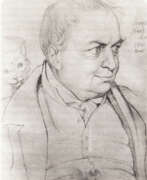

Joseph Anton Koch was an Austrian painter, draughtsman and printmaker, master of etching and illustration, novelist and representative of the classicist landscape in German art. In his native country he was associated with the Biedermeier aesthetic, and in Rome with the Nazarene society.
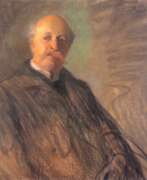

Juliusz Fortunat Kossak was an Austrian Polish historical painter and master illustrator who specialized in battle scenes, military portraits and horses. He was the progenitor of an artistic family that spanned four generations, father of painter Wojciech Kossak and grandfather of painter Jerzy Kossak.


Oskar Larsen was an Austrian painter, graphic artist and illustrator, son and pupil of the artist Karl Christian Larsen, member of the Royal Academy of Arts in London.
He studied at the Vienna Academy of Art and worked as a war painter during World War I. Larsen was attracted to biblical and mythological themes, for his works he also used historical genre scenes.
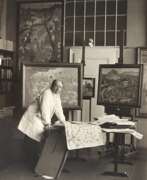

Oskar Laske was an Austrian architect and painter.
His favourite subjects were watercolours from his travels in Europe and North Africa. They are mostly landscapes, town squares and genre scenes. Laske is also known as a graphic artist and book illustrator.
Oskar Laske was a very prolific artist, and part of his rich legacy is linked to Ukraine and the Ukrainians, especially his hometown of Chernivtsi.
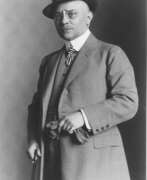

Heinrich Lefler was an Austrian artist, book illustrator and theatre set designer. He studied painting in Vienna at the Academy of Fine Arts and at the Munich Academy of Fine Arts.
Heinrich Lefler was the chief painter of the Vienna State Opera. Since 1903 he has taught at the Academy of Fine Arts and worked simultaneously as a set designer at the Vienna Burgtheater.
Heinrich Lefler was also one of Austria's first artists active in the field of applied art. He created advertising posters for companies, designed bank notes and painted murals for villas, castles and hotels. Lefler also illustrated numerous editions of magazines, calendars and books.


Fritzi Löw (German: Fritzi Löw, also Friederike Löw) was an Austrian artist and outstanding illustrator.
She trained at the Vienna School of Applied Arts, then worked as a designer in the Vienna workshop, where she made wallpaper, fashionable fabrics and carpets, glass paintings, and ceramics. From 1917 to 1923, Fritzi Löw created lithographs for Anton Schroll's publishing house and was a member of the "Wiener Frauenkunst"; many fairy tale and storybook editions were decorated with her illustrations.
In 1938 Fritzi Löw emigrated to Brazil with stops in Denmark and England, where she worked as a furniture designer, and returned to Vienna in 1955.
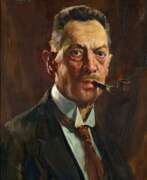

Anton Marussig was an outstanding Austrian artist whose versatile oeuvre spanned the fields of landscape painting, portraiture, figurative and genre painting as well as illustration.
The son of a magistrate, Anton Marussig became a recognised student at the Landscape Drawing Academy in Graz under the tutelage of the renowned Hermann von Königsbrunn. He later continued his education in Munich at the Academy of Fine Arts, where he was taught by outstanding artists such as Gabriel von Hackl, Wilhelm von Lindenschmit and Alexander von Liezen-Mayer.
Marussig received numerous awards and recognitions for his artistic work. His remarkable teaching career began in 1907, when he taught at both the Technical College and the Provincial Art School in Graz. In addition to his teaching activities, Marussig was also active as an industrial painter and received the highest award, the Golden State Medal, in 1912.
In 1913 he became a member of the Austrian Artists' Association. During the First World War, Anton Marussig also contributed to the documentation of this turbulent time as a war painter.


Leopold Carl Müller was an Austrian genre painter, illustrator and teacher. Known for his striking works in the Orientalist style.
Studied at the Vienna Academy under Christian Ruben and Carl von Blaas. Thanks to a government scholarship, Müller took part in the World Exhibition of 1867 in Paris, where he was deeply impressed by Eugène Fromentin's paintings.
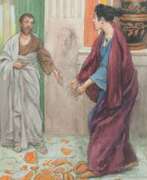

Felician Myrbach, an Austrian artist renowned for his multifaceted contributions to the art world, was a significant figure in the late 19th and early 20th centuries. Born in Zalesciki, Ukraine, in 1853, Myrbach's career spanned various roles, including painter, illustrator, and graphic artist. His educational journey included teaching at the cadet school in Vienna and studying at the Vienna Academy. In 1881, he moved to Paris to further his career as an illustrator, eventually becoming a professor of Illustration at the Vienna School of Arts and Crafts from 1899 to 1905.
Felician Myrbach's artistry was not confined to one location; he lived and worked in multiple European cities, including Paris, Barcelona, and near Bilbao, before passing away in Klagenfurt, Austria, in 1940. His works were displayed in prestigious exhibitions, such as the Vienna Secession shows and the Royal Watercolour Society in Belgium, showcasing his versatility and the broad appeal of his art.
Felician Myrbach's contributions to book illustration were notable, with his work appearing in various publications, such as Alphonse Daudet’s "Wives of Men of Genius" and "Trente ans de Paris à travers ma vie et mes livres." His distinctive signature can be found on many illustrations, underscoring his significant role in the art of book illustration during his time.
For collectors and experts in art and antiques, Felician Myrbach's works offer a glimpse into the vibrant art scene of his era, reflecting the cultural and artistic movements of the time. His legacy continues to be celebrated and studied, making him a pivotal figure in the history of European art.
For those interested in staying updated on Felician Myrbach, subscribing to updates can be a valuable way to stay informed about new product sales and auction events related to his work. This subscription service is dedicated to providing focused updates, ensuring that enthusiasts and collectors are well-informed about opportunities related to Myrbach's enduring legacy.
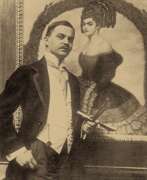

Hanns Pellar was an Austrian painter and illustrator. He studied painting at the Vienna Academy of Fine Arts under Heinrich Lefler.
Hanns Pellar was one of Munich's most prominent painters, whose quality craftsmanship and very pleasing images were characteristic of the Prince Regent's era. As a "favourite of various respected Darmstadt families", he produced a large number of portraits, especially of ladies, which eventually earned him the nickname "painter of elegance".
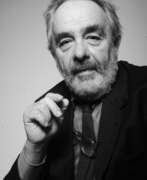

Arnulf Rainer is an Austrian artist who painted in the genre of informal abstract art.
From his early works the artist was inspired by the ideas of Surrealism. He also created works of art where he applied paint over photographs and works of other artists.
In the 1950s, Rainer painted a series of blindfold paintings in the technique of Surrealist automatism. In 1978 he received the Austrian Grand National Prize. Rainer has exhibited in New York, London, Vienna, Paris, Berlin and Munich. His works are in the collections of the Albertina, the Pompidou Center, the Stedelijk Museum, the Metropolitan Museum of Art and the Museum of Modern Art.


Wilhelm Thöny was an Austrian artist, graphic designer and illustrator.
Thöny studied at the Munich Academy of Fine Arts, first working as a graphic designer and illustrator for several publishing houses. He began showing his work in exhibitions in 1910 and became one of the founders of the New Secession in Munich. In 1923, together with the artists Alfred Wickenburg and Fritz Silberbauer, Wilhelm Thöny founded the Graz Secession and was appointed its first president. He also worked for many publications. It was a successful period for the artist: he was represented in numerous exhibitions and sold well. He was awarded the honorary title of professor.
In 1938, due to the tense situation in Europe, Thöny and his wife moved to New York, where the artist worked successfully until a warehouse fire in 1948, which destroyed about a thousand of his works. He did not recover from this blow and died a year later. Wilhelm Thöny is now considered one of Austria's greatest modernists. Only a fraction of his vast oeuvre, including battle scenes from World War I and large-scale views of New York City, remains, but his work can be seen in major European and American museums.
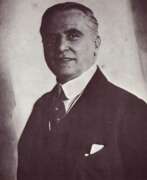

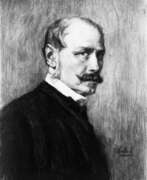

August von Pettenkofen, born August Xaver Carl von Pettenkofen, was an Austrian painter, illustrator and caricaturist.
He studied painting at the Vienna Academy of Fine Arts and painted genre works in the Biedermeier style. During the revolution of 1848 Pettenkofen became a war artist and for a long time created watercolors and lithographs depicting Austrian military uniforms. And later in Paris he was drawn to the Barbizon school. The artist's paintings from that period are filled with sincerity and empathy towards the peasants depicted.
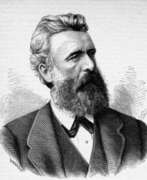

Arthur Georg von Ramberg was an Austrian artist of the mid-nineteenth century, mainly working in Germany. He is known as a graphic artist, illustrator and lithographer, author of genre and historical paintings, book illustrations, frescoes, engravings, lithographs and woodcuts. \
Early in his career, Arthur von Ramberg created paintings based on Goethe's works. Significant for his career was a series of illustrations of Schiller's works. He taught art in Munich and Weimar, and his pupils included Albert von Keller and other famous masters.


Edward Jakob von Steinle was an Austrian-German historical painter. He created several paintings of religious content in the style of the Nazarene. However, gifted with a multifaceted talent, he left a great number of drawings of non-religious content, including illustrations for Shakespeare's dramas and Brentano's Rhine Fairy Tales.
